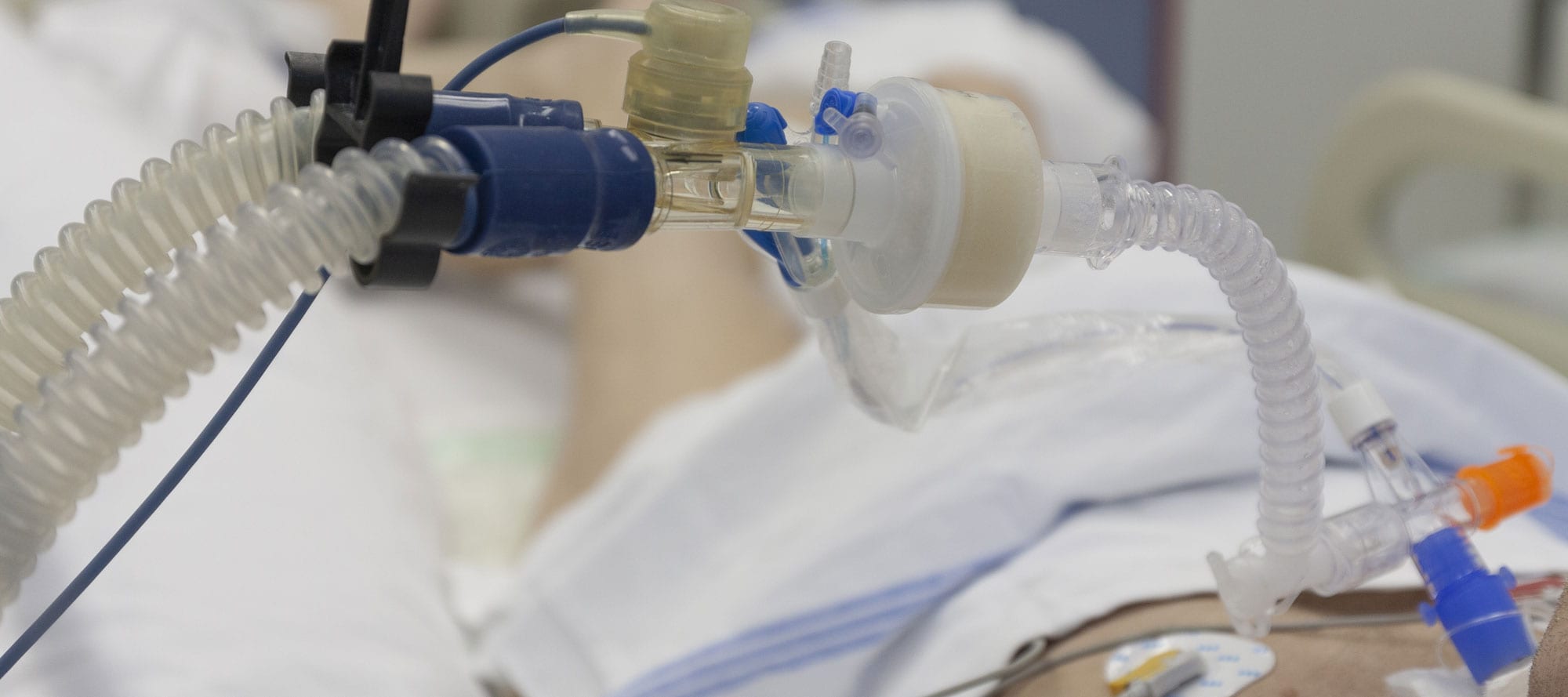- Association of Treatment Dose Anticoagulation with In-Hospital Survival Among Hospitalized Patients with COVID-19
Authors assessed association between administration of in-hospital anticoagulation and survival in a large cohort of hospitalized patients with COVID-19. Among 2,773 hospitalized COVID-19 patients, 786 (28%) received systemic AC during their hospital course. The median (IQR) hospitalization duration was 5 days (3-8 days). Median (IQR) time from admission to AC initiation was 2 days (0-5 days). Median (IQR) duration of AC treatment was 3 days (2-7 days). In-hospital mortality for patients treated with AC was 22.5% with a median survival of 21 days, compared to 22.8% and median survival of 14 days in patients who did not receive AC (Figure 1A). Patients who received AC were more likely to require invasive mechanical ventilation (29.8% vs 8.1%, p<0.001). Prospective randomized trials are needed to determine whether systemic AC confers a survival benefit in hospitalized patients with COVID-19. - Feasibility and physiological effects of prone positioning in non-intubated patients with acute respiratory failure due to COVID-19 (PRON-COVID): a prospective cohort study
In this prospective, feasibility, cohort study, patients aged 18–75 years with a confirmed diagnosis of COVID-19-related pneumonia receiving supplemental oxygen or non-invasive continuous positive airway pressure were recruited from San Gerardo Hospital, Monza, Italy. Prone positioning was feasible and effective in rapidly ameliorating blood oxygenation in awake patients with COVID-19-related pneumonia requiring oxygen supplementation. The effect was maintained after resupination in half of the patients. Further studies are warranted to ascertain the potential benefit of this technique in improving final respiratory and global outcomes.
- Effect of Dexamethasone in Hospitalized Patients with COVID-19 – Preliminary Report
2104 patients randomly allocated to receive dexamethasone were compared with 4321 patients concurrently allocated to usual care. Overall, 454 (21.6%) patients allocated dexamethasone and 1065 (24.6%) patients allocated usual care died within 28 days (age- adjusted rate ratio [RR] 0.83; 95% confidence interval [CI] 0.74 to 0.92; P<0.001). The proportional and absolute mortality rate reductions varied significantly depending on level of respiratory support at randomization (test for trend p<0.001): Dexamethasone reduced deaths by one-third in patients receiving invasive mechanical ventilation (29.0% vs. 40.7%, RR 0.65 [95% CI 0.51 to 0.82]; p<0.001), by one-fifth in patients receiving oxygen without invasive mechanical ventilation (21.5% vs. 25.0%, RR 0.80 [95% CI 0.70 to 0.92]; p=0.002), but did not reduce mortality in patients not receiving respiratory support at randomization (17.0% vs.13.2%, RR 1.22 [95% CI 0.93 to 1.61]; p=0.14). Conclusions: In patients hospitalized with COVID-19, dexamethasone reduced 28-day mortality among those receiving invasive mechanical ventilation or oxygen at randomization, but not among patients not receiving respiratory support.
- Tocilizumab treatment for Cytokine Release Syndrome in hospitalized COVID-19 patients: survival and clinical outcomes
An observational study of consecutive COVID-19 patients hospitalized from 03.10-31.20 and followed through 04.21.20 was conducted by chart review. Patients were treated with tocilizumab using an algorithm that targeted CRS. Survival and mechanical ventilation (MV) outcomes were reported for 14 days and stratified by disease severity designated at admission (severe, ≥3L supplemental oxygen to maintain oxygen saturation >93%). For tocilizumab-treated patients, a pre/post analyses of clinical response, biomarkers and safety outcomes was assessed. Post-hoc survival analyses were conducted for race/ethnicity. A treatment algorithm that included tocilizumab to target CRS may influence mechanical ventilation and survival outcomes. In tocilizumab-treated patients, oxygenation and inflammatory biomarkers improve with higher than expected survival. Randomized trials must confirm these findings.
Situation Dashboards

World Health Organization (WHO)
Novel Coronavirus (COVID-19) Situation from World Health Organization (WHO)

Johns Hopkins University (JHU)
Coronavirus COVID-19 Global Cases by the Center for Systems Science and Engineering (CSSE) at JHU

COVID-19 in US and Canada
1Point3Acres Real-Time Coronavirus (COVID-19) Updates in US and Canada with Credible Sources

Genomic Epidemiology COVID-19
Genomic Epidemiology of (COVID-19) Maintained by the Nextstrain team, enabled by data from GISAID.





